Contents
| |||||
| Centuries: | |||||
|---|---|---|---|---|---|
| Decades: | |||||
| See also: | List of years in Scotland Timeline of Scottish history 1689 in: England • Elsewhere | ||||
Events from 1689 in the Kingdom of Scotland
| |||||
| Centuries: | |||||
|---|---|---|---|---|---|
| Decades: | |||||
| See also: | List of years in Scotland Timeline of Scottish history 1689 in: England • Elsewhere | ||||
Events from 1689 in the Kingdom of Scotland

1689 (MDCLXXXIX) was a common year starting on Saturday of the Gregorian calendar and a common year starting on Tuesday of the Julian calendar, the 1689th year of the Common Era (CE) and Anno Domini (AD) designations, the 689th year of the 2nd millennium, the 89th year of the 17th century, and the 10th and last year of the 1680s decade. As of the start of 1689, the Gregorian calendar was 10 days ahead of the Julian calendar, which remained in localized use until 1923.

The Battle of Killiecrankie, also referred to as the Battle of Rinrory, took place on 27 July 1689 during the 1689 Scottish Jacobite rising. A Jacobite force under John Graham, Viscount Dundee defeated a government army commanded by Hugh Mackay.

John Graham of Claverhouse, 1st Viscount Dundee, known as the 7th Laird of Claverhouse until raised to the viscountcy in 1688, was a Scottish soldier and nobleman, a Tory and an Episcopalian. Claverhouse was responsible for policing south-west Scotland during and after the religious unrest and rebellion of the 1670s/80s.
William Cleland was a Scottish poet and soldier.
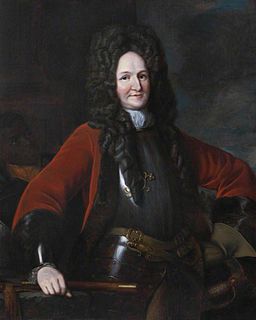
Hugh Mackay was a Scottish military officer who settled in the Netherlands, and spent most of his career in the service of William of Orange.

John Murray, 1st Duke of Atholl, KT, PC was a Scottish nobleman, politician, and soldier. He served in numerous positions during his life, and fought in the Glorious Revolution for William III and Mary II.
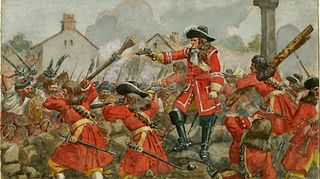
The Battle of Dunkeld was fought between Jacobite clans supporting the deposed king James VII of Scotland and a regiment of covenanters supporting William of Orange, King of Scotland, in the streets around Dunkeld Cathedral, Dunkeld, Scotland, on 21 August 1689 and formed part of the Jacobite rising of 1689, commonly called Dundee's rising in Scotland. The battlefield was added to the Inventory of Historic Battlefields in Scotland in 2012.
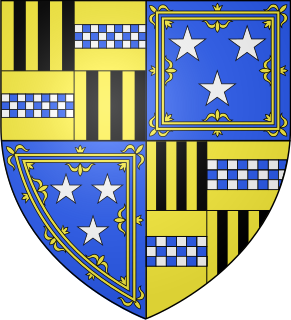
John Murray, 1st Marquess of Atholl, KT was a leading Scottish royalist and defender of the Stuarts during the English Civil War of the 1640s, until after the rise to power of William and Mary in 1689. He succeeded as 2nd Earl of Atholl on his father's demise in June 1642 and as 3rd Earl of Tullibardine after the death of his first cousin the 2nd Earl in 1670.
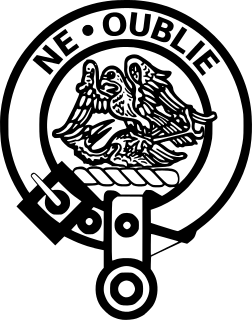
Clan Graham is a Scottish clan who had territories in both the Scottish Highlands and Lowlands.
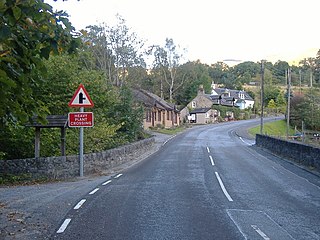
Killiecrankie (; is a village in Perth and Kinross, Scotland on the River Garry. It lies at the Pass of Killiecrankie, by the A9 road which has been bypassed since 1986. The village is home to a power station forming part of the Tummel Hydro-Electric Power Scheme. Much of the riverbank is owned by the National Trust for Scotland. The nearby 10 arch railway viaduct was built in 1863 designed by Joseph Mitchell.
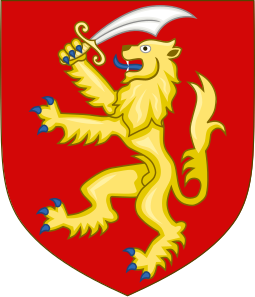
Clan Scrymgeour is a Highland Scottish clan.
George Munro of Auchinbowie, originally of Bearcrofts was a Scottish born military officer of the late 17th century. He was the first Munro of Auchinbowie.
Events from the year 1689 in England.
Events from the year 1689 in Ireland.
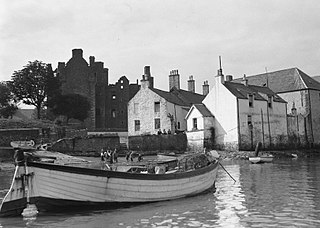
Alexander Cannon, also spelt Cannan, was a Scottish professional soldier in the second half of the 17th century, who served in the armies of William of Orange and James VII and II.
Alexander MacAlister was 8th of Loup, Chief of Clan MacAlister.

Lieutenant-Colonel John Blackadder was a Scottish soldier who served with the Cameronian Regiment during the late seventeenth and early eighteenth centuries.

The Glorious Revolution in Scotland was part of a wider series of events between 1688–1689 in England and Scotland known as the Glorious Revolution. It covers the deposition of James VII, his replacement by his daughter Mary II and her husband William III of Orange and the political settlement thereafter. Scotland and England were linked but separate countries, each with its own Parliament; decisions in one did not bind the other.
George Mackay, 3rd Lord Reay (1678–1748), was a Scottish noble and chief of the Clan Mackay, a Scottish clan of the Scottish Highlands. During his life the Glorious Revolution took place which directly affected his family and estate, and during his chiefdom he served the British-Hanoverian Government during the Jacobite rising of 1715 and the Jacobite rising of 1745.

The Jacobite rising of 1689 was a revolt seeking to restore James II & VII, following his deposition in November 1688. Adherents of the exiled House of Stuart were known as 'Jacobites', from Jacobus, Latin for James, and the associated political movement as Jacobitism.